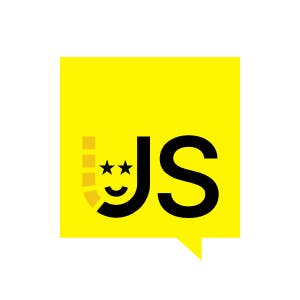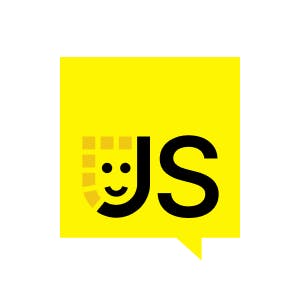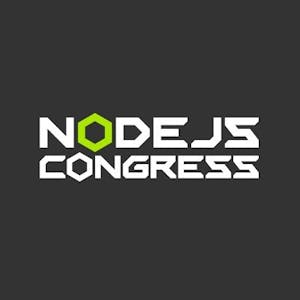Talks from our events
Latest
All talksESLint One for All Made Easy React Day Berlin 2024
React Day Berlin 2024
21 min
ESLint One for All Made Easy

Hello everyone! I'm Anthony Fu, a coaching member of Vit, Vue, and Nuxt. Today, I'll share my findings and practices in exploring ESLink and its ecosystem. ESLink v9.0 released 7 months ago with the new FlatConfig, which simplifies plugin configuration and provides full control and customization in JavaScript. Migrate legacy config to FlatConfig with eslink-migrate-config CLI and use eslink-config-inspector for visualized step tool. Flag config utilities make config customization easier and allow project-aware configs. ESLink is a powerful AST toolkit and can be used as a formatter. Use ESLink for maintaining stylistic rules and customize it to fit your project's needs.
Making React Work in Chrome Extensions React Summit US 2024Watch video: Making React Work in Chrome Extensions
React Summit US 2024Watch video: Making React Work in Chrome Extensions


11 min
Making React Work in Chrome Extensions



2 authors
We're going to talk about making React work in Chrome extensions. We started building Chrome extensions during our freshman year and have learned a lot along the way. Chrome extensions have two parts: the content script and the background script. Our story begins before React, and we created the UT Registration Plus extension to simplify class registration. We initially built the extension using HTML strings and then tried using jQuery, resulting in unmaintainable code. When building Octoshop, we chose React for its support and package system, but integrating it with Ibotta's Vue extension led to a messy codebase. We centralized our code and managed Chrome's state using React portal and hooks, improving maintainability.
Twenty Years of Web Testing: From Selenium's Dawn to Vitest's Promise JSNation US 2024Watch video: Twenty Years of Web Testing: From Selenium's Dawn to Vitest's Promise
JSNation US 2024Watch video: Twenty Years of Web Testing: From Selenium's Dawn to Vitest's Promise
22 min
Twenty Years of Web Testing: From Selenium's Dawn to Vitest's Promise

My goal with this talk was to answer the question of why we have another test runner. The talk breaks down the history of web testing into three chunks: the click-through era, browser war one, and browser war two. It discusses the motivations behind browser test runners and node test runners, highlighting Karma as the first node-based runner that gained popularity. The rise of node-based test runners like Ava, Tape, Mocha, and Jest is attributed to their stability and ease of use compared to Karma. Jest faced challenges with module loading and transpiling, but its non-opinionated abstraction made it a suitable choice. The shift towards environment-aware runners like VTest allows for safer testing and aligns with the need for transpilation across different environments. Lastly, the talk touches on the future of test tooling and the implications of AI on testing.
It’s Time to Fall in Love With CSS (Again) JSNation US 2024Watch video: It’s Time to Fall in Love With CSS (Again)
JSNation US 2024Watch video: It’s Time to Fall in Love With CSS (Again)
11 min
It’s Time to Fall in Love With CSS (Again)

Hi, I'm Tony Alisea, a developer with over 25 years of experience. CSS won in the 90s due to its separation of structure and presentation, cascade concept, and powerful selectors. JavaScript developers fell out of love with CSS when they started using frameworks to construct the DOM. Instead of looking at the DOM holistically, we began to think in terms of componentization. CSS has continued to grow and add extraordinary features, such as CSS nesting and cascade layers. CSS layers give more control over the layering of CSS styles. Container queries allow us to respond to the size of the container instead of the viewport. The has pseudo class enables selecting parent elements. CSS is now more component-friendly and improves the user experience.
Making an Emulator in JavaScript? React Day Berlin 2024
React Day Berlin 2024
29 min
Making an Emulator in JavaScript?

Hello, everyone. Thank you for being here instead of the other talk. Emulation is when something pretends to be something else, like a computer pretending to be a PlayStation 1. There are two types of emulation: hardware emulation and software emulation. Software emulation is when the software mimics the behavior of a console. JavaScript is not the ideal language for emulation, but it can still be used. The speaker built an emulator for Chip 8, a simple console from the 70s, as a fun project. The emulator focuses on the screen and utilizes Canvas. The Chip 8 screen is small, measuring 64 by 32, and is monochrome. The CPU and memory are important components in emulation, and understanding hexadecimal notation and bitwise operators is crucial. The speaker explains the use of hexadecimal notation and bitwise operators in manipulating bytes. Creating a switch statement for instructions is an important step in the emulator development. The legality of emulation is discussed, along with advice on not providing ROMs or proprietary BIOS. Emulation projects can be complex, and reverse engineering consoles is mentioned. The speaker highlights the performance of JavaScript in emulating consoles. They also mention their availability for further questions and provide information on how to follow their work.
AI-Powered E2E UI Testing: Faster Creation, Easier Maintenance JSNation US 2024
JSNation US 2024
10 min
AI-Powered E2E UI Testing: Faster Creation, Easier Maintenance

Hello, everyone. Today we are going to explore AI-powered end-to-end testing. Unlike unit tests, UI testing has a huge layer of obstructions between the source code and the rendered UI. The source code includes HTML, CSS, and TypeScript, which are transpiled into JavaScript and bundled with tools like Webpack. AI can generate tests effectively for standard websites or blogs, but it may struggle with niche applications behind strict authorization or on-premise tools. AI-powered end-to-end testing for complex scenarios requires our guidance. We use meaningful data test IDs and follow the page objects model pattern. Additionally, we rely on useful tools like the end-to-end test helper in-browser extension and the continue IDE extension. Now, let's proceed to the demo, where we will create tests for the Pokemon application, including the ability to filter by name or type. We will navigate to the Pokemon details page and use our extension to manage settings and prompts. Additionally, we will create the details page object together and generate the test file. The Pokemon details page has 105 elements. We can view the elements for debugging purposes, including page object name, Pokemon details page, and system message. We will copy the page object and save it to a file. We need to make it exportable. Then, we will use the extension to create an end-to-end test and pass the context. I will use all the open files, including the page objects and the test case itself. I will send them to EI along with the predefined prompt. There is a system message and additional information we need to be aware of. The test runs successfully, and that concludes this part.
Advanced Playwright Techniques for Flawless Testing JSNation US 2024
JSNation US 2024
20 min
Advanced Playwright Techniques for Flawless Testing

Hi, everyone. My name is Debbie O'Brien, Principal Technical PM at Microsoft. I'm focusing on Playwright, a reliable end-to-end testing tool for modern web apps. It works on any browser and platform, has powerful tooling, and tests run fast. Advanced techniques include UI mode, HTML reports, and trace viewer. Use annotations in Playwright to enhance reporting and test organization. Mocking API responses and external links is possible with Playwright. You can also test date and time by setting a fixed fake time. Playwright offers CLI test options and has a vibrant community. Join the Playwright Discord server and follow the important docs and YouTube channel for more information.
Web Workers: Handling Heavy Processing on the Client Side JSNation US 2024
JSNation US 2024
18 min
Web Workers: Handling Heavy Processing on the Client Side

In this talk, the speaker introduces web workers and discusses how they can handle large processing on the client side. Examples, benchmarks, and tradeoffs are provided. The benefits of using web workers are discussed, and a demo project using VanillaJS and the live server extension of VS Code is showcased. The speaker demonstrates how to use web workers to prevent the main thread from getting blocked during large operations. The process of creating a web worker file and moving functions to it is explained. The speaker also shows how to handle messages and perform operations with web workers. The final remarks include contact information and an invitation to check out the speaker's YouTube channel for React courses and articles.
Fine-Grained Reactivity Without Any Compiler React Day Berlin 2024
React Day Berlin 2024
29 min
Fine-Grained Reactivity Without Any Compiler

My name is Nicolas, and today, I'm going to talk about Fine-Grain Reactivity without the compiler this time. React is reactive, but it re-renders unnecessary components. Fine-grained reactivity is achieved by updating specific elements instead of whole components. Pigment encountered reactivity problems while building real-time financial data boards. They created their own reactive system on top of React to achieve fine-grained reactivity. They used custom hooks like useShell, useComputed, and useWatch to integrate React with their reactive system. They also considered using native JavaScript for optimization but chose to preserve React. They use external libraries like Zestand for flexibility, and maintaining reactivity during React updates has not been a problem.
Build RAG from Scratch JSNation US 2024Watch video: Build RAG from Scratch
JSNation US 2024Watch video: Build RAG from Scratch
20 min
Build RAG from Scratch

Today's Talk explores the concept of Retrieval Augmented Generation (RAG) and its application in building chatbots. RAG involves giving language models more context by retrieving relevant data. This is achieved by creating vectors for each talk and using cosine similarity to compare them. The talk emphasizes the limitations of word-based vectors and the benefits of using embedding models and vector databases. By replacing word-based models with vector search, content can be sorted and retrieved more efficiently. RAG, along with large language models and AI, has the potential to enhance scalability and unleash new possibilities.
Featured
How React Compiler Performs on Real Code React Advanced 2024
React Advanced 2024
31 min
How React Compiler Performs on Real Code
Top Content
I'm Nadia, a developer experienced in performance, re-renders, and React. The React team released the React compiler, which eliminates the need for memoization. The compiler optimizes code by automatically memoizing components, props, and hook dependencies. It shows promise in managing changing references and improving performance. Real app testing and synthetic examples have been used to evaluate its effectiveness. The impact on initial load performance is minimal, but further investigation is needed for interactions performance. The React query library simplifies data fetching and caching. The compiler has limitations and may not catch every re-render, especially with external libraries. Enabling the compiler can improve performance but manual memorization is still necessary for optimal results. There are risks of overreliance and messy code, but the compiler can be used file by file or folder by folder with thorough testing. Practice makes incredible cats. Thank you, Nadia!
React Server Components in AI Applications React Advanced 2024
React Advanced 2024
17 min
React Server Components in AI Applications

Today we will discuss React server components with AI and how to build a better search experience using them. We will learn how to make a Next.js app AI-enabled using the Vercel AI SDK. The Vercel AI SDK's streamUI function with the GPT 4.0 model will be used to make suggestions interactive. We will explore the use of history and conversation in AI and how to continue the conversation and read the result. The concept of generative UI with the vector database will be introduced, along with querying the database for movies. We will process user queries and return movies based on them. The power of React server components in enhancing UI will be demonstrated. In summary, the Talk covers vector embeddings, natural language search, and generative UI.
How React Router Became a Framework React Advanced 2024
React Advanced 2024
31 min
How React Router Became a Framework

My name is Mark Dalglish and I'm here to discuss how ReactRouter became a framework. Remix is built on ReactRouter and heavily relies on it. Remix feels like a framework because it has a CLI, manages the dev and build lifecycle, and has strong opinions about the file system structure. Remix embraced Vite as a plugin, allowing developers to integrate it seamlessly into their existing Vite setup. The shift to Vite led to a change in the philosophy of Remix Vite, enabling frameworks to orchestrate all the environment builds and make the framework as a plugin pattern first class. React Router is merging with Remix to make all the build time framework features available to React Router consumers. React Router is now officially a framework as well as a library. The move to integrate Remix into React Router is driven by the exploration of the next generation of Remix. React Router V7 simplifies by dropping the React Native layer and allows flexibility for consumers to use it as a library or as a framework with additional architectural features provided by plugins. The focus is on betting on Vite in the long term, and React Router plans to support React Server components. Thank you to Mark for answering the questions.
AI + UX: Product Design for Intelligent Experiences C3 Dev Festival 2024
C3 Dev Festival 2024
28 min
AI + UX: Product Design for Intelligent Experiences

AI design challenges include bias, safety, and security. Trust and transparency are important in AI. Design principles for AI include user control, fighting bias, and promoting good decision-making. AI can enable the design process and investors expect to see it included in products. AI empowers individuals to create and share ideas, but managing expectations is crucial.
We May Not Need Component Testing Vue.js Live 2024
Vue.js Live 2024
26 min
We May Not Need Component Testing

Component testing is a gray area between integration and unit testing. The demo app focuses on the cart component and writing test cases for Playwright component test and VTest. The first cart test encounters a bug with the invisible method in View Test.
Less Cruft, More Power: Leverage the Power of the Web Platform C3 Dev Festival 2024
C3 Dev Festival 2024
30 min
Less Cruft, More Power: Leverage the Power of the Web Platform

This talk focuses on the powerful features of CSS and HTML that can level up developer skills and enhance web UI. Scroll-driven animations, popover API, and anchor positioning are explored as ways to create dynamic effects, improve performance, and increase accessibility. The talk also emphasizes the benefits of building presentations with CSS and HTML, separating logic from styling, and leveraging core platform features. Wishlist features for the web platform and the challenges of pushing updates across browsers are discussed.
Install Nothing: App UIs With Native Browser APIs JSNation 2024
JSNation 2024
31 min
Install Nothing: App UIs With Native Browser APIs

This Talk introduces real demos using HTML, CSS, and JavaScript to showcase new or underutilized browser APIs, with ship scores provided for each API. The dialogue element allows for the creation of modals with minimal JavaScript and is supported by 96% of browsers. The web animations API is a simple and well-supported solution for creating animations, while the view transitions API offers easy animation workarounds without CSS. The scroll snap API allows for swipers without JavaScript, providing a smooth scrolling experience.
Adapting to the Future of Work in Tech C3 Dev Festival 2024
C3 Dev Festival 2024
28 min
Adapting to the Future of Work in Tech

The Talk explores the AI-assisted programming paradigm shift and the evolution of software engineering. It discusses the limitations of large language models (LLMs) and highlights the importance of balancing forces in software engineering. The future of programming is seen as models solving problems based on datasets. The Talk emphasizes the responsibility of creating a better future and the need to strike a balance between utilizing tools and building problem-solving skills. It also touches on the human dependence on AI and recommends resources for further learning.
Your App Crashes My Browser JSNation US 2024
JSNation US 2024
29 min
Your App Crashes My Browser

We asked co-sponsors to present React, an essential framework for web and mobile developers. TypeScript improves the development experience. Let's talk about the neglected topic of JavaScript leaks and how Chrome handles them. Leaks are easy to create, even for good developers. We crashed browsers due to memory leaks. Solution: fully reload the page after soft navigations. Today we have tools to fix leaks. The first step is admitting you have a problem. Use the reporting API to collect data on memory leaks. If you have a problem, it's not just a single leak. Debug and take memory snapshots. Load the page, perform an action, go back. Compare snapshots to find leaks. Use Memlab by Facebook to identify leaked objects. Memlab tells us memory is used, leaks are everywhere. Chrome extension helps with exporting actions to scenario.js file. 50 users already. Fixing memory leaks involves finding and nullifying unused objects. Spot the leak in a simple React component that adds event listeners. Removing the component leaves the listeners behind. In session two, adding a set interval creates additional listeners. Debugging with Memlab and using non-minified code and named functions helps identify the leaks. Solution: add a component. In React, frameworks provide ways to clean up after components are removed. Spotting a leak in uppercase spelling of mount. Hooks offer use effect to handle cleanup. A use effect allows you to return a function for cleanup. Spot the weird memory leak caused by console logs. Try the reporting API, check your framework, use null, and find your first leak. Memory leaks may be more significant on a mobile browser due to limited available memory. Differentiating between leaked memory and growing global state can be determined by the app's architecture. Checking for memory leaks on mobile can be done using dev tools and manual inspection or by using Puppeteer and the developer tools protocol for emulation. The lack of naming and bindings for anonymous functions in a codemark plugin is a potential area for improvement. Neglect and the excessive amount of JavaScript are common culprits for poor web performance. Facebook's experience with redesigning their website highlighted the need for tools to address the performance bottleneck caused by JavaScript. Throttling the CPU can be effective. Developers should set objects to null when they are no longer needed, allowing the garbage collector to clean up. Chrome DevTools provides options for detecting console log memory objects. WeakRefs and WeakMaps can be useful for cleaning up memory leaks. Integration with tools like MemLab can help regression test releases for memory leaks. We are still early in memory leaks tooling. Raising awareness about the problem is important. Lighthouse scores are not the sole indicator of a fast website. Additional testing and familiarity with Core Web Vitals are recommended.
Bring the Power of AI to Your Application C3 Dev Festival 2024
C3 Dev Festival 2024
28 min
Bring the Power of AI to Your Application

This Talk covers various aspects of artificial intelligence and user experience in software development. It explores the evolution and capabilities of large language models, the importance of prompt engineering, and the need to design AI applications with human users in mind. The Talk also emphasizes the need to defensively design for AI failure, consider user happiness, and address the responsibility and risks of AI implementation. It concludes with recommendations for further reading and highlights the importance of trustworthiness in AI code tools.
Trending today
React Query - The Bad Parts React Day Berlin 2024
React Day Berlin 2024
30 min
React Query - The Bad Parts
Top Content
React.js is a new language for JavaScript that provides a more efficient and flexible way to build user interfaces. It uses a virtual DOM and JSX syntax. React.js is compatible with TypeScript and has certain requirements, such as Node.js and npm installation and knowledge of HTML, CSS, and JavaScript.
Build Things That Don’t Scale at All React Day Berlin 2024
React Day Berlin 2024
9 min
Build Things That Don’t Scale at All

My talk is about building things that don't scale. It starts with wanting to use a specific app and then deciding to build your own app. Building something that scales requires thinking about various factors like analytics, monetization, SEO, expansion, localization, and competition. Building fun and non-scalable apps can also be enjoyable. Examples include an app for automatically cropping screenshots and a private chat app. The use of Expo Go as a launcher for Expo apps and hosting servers for auto-updates is discussed. The creation of a Google calendar synchronizer using Expo Development Builds is also mentioned. The final takeaways are to think small, have fun with libraries but avoid using too many, and stay away from the app store for as long as possible. Visit the speaker's website for more information.
Nested Interactive Elements: An Nightmare in Accessibility React Advanced 2023Watch video: Nested Interactive Elements: An Nightmare in Accessibility
React Advanced 2023Watch video: Nested Interactive Elements: An Nightmare in Accessibility
23 min
Nested Interactive Elements: An Nightmare in Accessibility
Top Content
Nested interactive elements can cause accessibility issues on websites, and the speaker shares a personal experience with an accessibility bug involving a list component. Mitigating nested interactive structures involves limiting these patterns during development and restructuring existing elements. The speaker provides recommendations for improving accessibility, such as adjusting role properties and gathering user feedback. The conclusion emphasizes the importance of accessible solutions and encourages sharing resources to build more inclusive experiences.
Why You Should Use Redux in 2024 React Summit 2024
React Summit 2024
33 min
Why You Should Use Redux in 2024
Top Content
Mark Erickson explains the history, creation, evolution, and benefits of Redux. Redux was designed to make state updates and action history maintenance easy, incorporating functional programming principles. Redux Toolkit was created to simplify Redux usage. Redux is still a valid choice for its consistent pattern and separation of state from UI. The decision to use Redux depends on the specific use case and the need for centralized state management.
If You Were a React Compiler React Summit US 2024
React Summit US 2024
26 min
If You Were a React Compiler
Top Content
In this talk, the speaker aims to build an accurate understanding of how the new React compiler works, focusing on minimizing re-renders and improving performance. They discuss the concept of memoization and how it can be used to optimize React applications by storing the results of function calls. The React compiler automates this process by analyzing code, checking dependencies, and transpiling JSX. The speaker emphasizes the importance of being aware of memory concerns when using memoization and explains how the React compiler detects changes in function closure values. They also mention the Fibre Tree, which drives the reconciliation process and helps optimize performance in React. Additionally, the speaker touches on JSX transpilation, compiler caching, and the generation of code. They encourage developers to understand the code generated by the compiler to optimize specific sections as needed.
Testing Mail Service With Playwright TestJS Summit 2022Watch video: Testing Mail Service With Playwright
TestJS Summit 2022Watch video: Testing Mail Service With Playwright
17 min
Testing Mail Service With Playwright
Top Content
This Talk discusses how to test mail service with Playwright, covering e-mail verification, reset password user journey, and more. It explores the use of third-party providers for reliable e-mail delivery and demonstrates how Playwright can help perform checks on e-mail content. The Talk also introduces the concept of a fake SMTP server and showcases how fixtures can be used to access the SMTP server and perform assertions on the HTML body of emails. Playwright's HTML rendering feature allows for interaction with email content as if it were a regular web page. It highlights the ability to render HTML from API calls, perform assertions on the rendered page, and exclude dynamically generated data from visual regression tests.
Tanstack Start - A Client-Side First Full-Stack React Framework React Summit US 2024
React Summit US 2024
30 min
Tanstack Start - A Client-Side First Full-Stack React Framework
Top Content
We surveyed thousands of developers to show that a louder audience leads to a better presentation. There has been a shift in web app development towards server-first architectures, which has improved full-stack capabilities but at the cost of complexity and divergence from the client-centric approach. Tanstec Start is a meta-framework that aims to provide the best client-side authoring experience with powerful server-side primitives. The Tansec Router supports advanced routing features, URL state management, and JSON storage. Combined with the server-side rendering capabilities of TanStack Start, it becomes even more powerful. The TanStack Router has isomorphic loaders and integrates seamlessly with TanStack Query for additional features like polling and offline support. UseSuspenseQuery allows for dynamic streaming of data during SSR. TanStack Start also offers server-side features, API routes, server functions, and middleware. The future plans include RSCs, websockets, real-time primitives, and static pre-rendering. TanStack Start is now in beta and is suitable for building React apps. It is open source.
A Look Ahead at Web Development in 2025 JSNation US 2024
JSNation US 2024
32 min
A Look Ahead at Web Development in 2025
Top Content
Today, Wes Boss introduces the new features of the web, including customizable select and temporal, a standardized API for working with dates, time, and duration. The current date API in JavaScript has some problems related to time zones and date manipulation. With the temporal API, you can create dates without a time zone, specify dates without a year, and create durations without being attached to a specific date. The API also provides features for finding the difference between two dates. Invokers is a declarative click handlers API that eliminates the need for JavaScript. Speculation API enables pre-rendering and pre-loading of pages, improving performance. The CSS Anchor API allows positioning elements based on another element's location. Web components are encapsulated, framework-agnostic, and easy to use, offering a standardized approach for building reusable UI components. Building media UI components, like video players, is made easier with web components like Shoelace. Transformers JS allows running AI models in JavaScript for tasks like emotion detection and background removal. Python doesn't run in the browser, but JavaScript does. Small AI models can be loaded and executed faster in the browser using technologies like WebGPU. Animate height auto transition using calc size. Apply starting styles to elements for smooth animations. Use Vue transition for CSS and JavaScript animations. Syntax website with Vue transition for smooth page transitions. CSS relative colors allow for lighter or darker shades. Scope CSS ensures styles only apply to specified div containers. Web primitives facilitate modern JavaScript code. You can create web requests and receive web responses using the same primitives on both the client and server. There are many new web standards that work everywhere and frameworks like Hano and Nitro are built upon them. The select and Popover elements are accessible by default. Most of the discussed features will be available in all browsers by 2025. The future of web development with AI is uncertain, but web developers should embrace AI tools to improve efficiency. Implicit CSS lazy loading depends on whether it's prefetching or pre-rendering. Wes Boss discusses the specific features he is excited about in web development, including starting style, calc auto, and allowed discrete. He shares his preferred way of staying informed on new web development discoveries, emphasizing the importance of being part of the community and keeping up with industry discussions. Wes also mentions reading W3C meeting notes and recommends following the Twitter account Intent2Ship to stay updated on upcoming CSS features. Lastly, he discusses the potential impact of the new Scope CSS feature on developers' management of styles.
You Can’t Use Hooks Conditionally… or Can You? React Summit 2023Watch video: You Can’t Use Hooks Conditionally… or Can You?
React Summit 2023Watch video: You Can’t Use Hooks Conditionally… or Can You?
28 min
You Can’t Use Hooks Conditionally… or Can You?
Top Content
The Talk discusses the use of the Use hook in React and its ability to be used conditionally. It explains the concept of the fiber tree and how hooks values are stored in memory. The Talk also delves into the conditional use of useContext and how it differs from useState. It explores the process of updating context values and optimizing context rendering. The role of the provider in managing context values and rendering is emphasized.
Deep Dive into Undici Node Congress 2024
Node Congress 2024
24 min
Deep Dive into Undici
Top Content
Undici is a modern HTTP client for Node.js that offers improved performance and advanced features. It supports HTTP 1.1 and recently added HTTP 2.0 support. Undici provides impressive performance, especially with Undici.Stream. It also supports HTTP 1.1 pipelining, which can significantly cut response time. Undici offers flexible connection management and dispatchers, as well as interceptors for customization. Undici v7 is coming with improved APIs and platformatic runtime for running multiple microservices in the same process.
Short takes
JSR – Next Generation JavaScript Registry JSNation 2024
JSNation 2024
6 min
JSR – Next Generation JavaScript Registry

JSR is a new JavaScript registry that supports TypeScript and offers additional features like GitHub Action integration, provenance attestations, and documentation generation. It provides a simple website with package search, documentation, and a gamified score. The process of publishing a new package in JSR involves creating a JSR.json file with package details and exports, using MPX JSR publish to publish the package, and approving authorization in the browser. However, documentation for the package is not automatically generated and needs to be manually added.
Simplifying Analytics in React Apps React Summit US 2024
React Summit US 2024
7 min
Simplifying Analytics in React Apps

I'm presenting on simplifying analytics in React apps. We want to build embedded analytics for developers using common languages like JavaScript and TypeScript. By reducing backend complexity, developers can prioritize building dynamic data-rich UIs. BI platforms didn't deliver the customization required, so we aim to use React to create a powerful SDK. The SDK involves constructing a semantic layer, building reusable components in React, and doing cool things with it. We simplify the data model and generate a TypeScript representation. Sisense provides APIs for authentication, row-level security, and customization. We can now build React components directly off the generated model. The data model called datasource enables simple UI and eliminates the need for front-end engineers to write SQL API calls. We built a near-production-ready application using a React template and Sisense as the backend. With the simplified system and a semantic layer, we can now use large language models for chatbot-driven visualizations and dashboard layouts. This framework enables faster development and alternative methods for generating interactive React objects.
Empowering Nx with AI React Summit 2024
React Summit 2024
8 min
Empowering Nx with AI

Today's Talk discusses empowering NX with AI and building an AI-powered documentation system. NX is a powerful build system with smart features like project graph analysis and dependency management. The AI features include an assistant for streamlined navigation of documentation, AI error explainer, and resource allocation optimization on NX Cloud. The AI-powered documentation system uses embeddings and vector matching to find relevant Docs, utilizing tools like OpenAI, GPT, Superbase, and Vercel's AI SDK.
Solving i18n for React Server Components React Summit 2024
React Summit 2024
7 min
Solving i18n for React Server Components

The Talk discusses internationalization for server components and the challenge of loading translations efficiently. It suggests using import statements in JavaScript to optimize message loading and eliminate the need for namespaces. Tree shaking and tools like Paraglide.js can help minimize message delivery and simplify the process. Overall, the Talk emphasizes the importance of efficient internationalization practices in building multilingual apps.
What’s With Micro Frontends JSNation US 2024Watch video: What’s With Micro Frontends
JSNation US 2024Watch video: What’s With Micro Frontends
7 min
What’s With Micro Frontends

Micro-frontends break down a large frontend into smaller, independently deployable pieces. This approach improves scalability, team autonomy, and code maintenance. Two primary ways to implement micro-frontends are build time and run time. Module federation, introduced in Webpack 5, allows for dynamic real-time updates across teams. Challenges in implementing micro-frontends include getting type safety with TypeScript and testing at runtime. Module federation 2.0 introduced type extraction and manifest updates. Full site federation allows testing the whole app. Micro frontends involve trade-offs, so choose what benefits you the most.
Aligning Patterns Across Design and Development React Summit US 2024
React Summit US 2024
8 min
Aligning Patterns Across Design and Development

I'm Jake, a developer advocate at Figma, and today I'll be discussing aligning patterns between design and development. Collaboration between designers and developers requires recognizing our different perspectives. The goal is to close the gap between design and development, but this is often aspirational. The optimal path between design and development is somewhere in between, depending on factors like friction or waves. By recognizing each other's areas of resistance, we can find ways to make collaboration more effective. Figma's Code Connect fills the gap between Figma component logic and code logic by allowing teams to publish code-based informed component code snippets. CodeConnect currently supports HTML, Web Components, Angular, Vue, React, SwiftUI, and Jetpack Compose, and seeks to support more languages.
The Entanglement of Concerns between People and Software Development C3 Dev Festival 2024
C3 Dev Festival 2024
8 min
The Entanglement of Concerns between People and Software Development

As a software developer, the entanglement between people and the software they develop is important. Legacy software poses challenges due to lack of time, understandability, and optimization. Legacy systems in health care face similar challenges. Microsoft's evolution and innovation highlight the value of change. Developing adaptable and user-friendly software requires considering the interconnectedness of all actors.
Building React Primitives to Power In-App Messaging React Summit US 2024Watch video: Building React Primitives to Power In-App Messaging
React Summit US 2024Watch video: Building React Primitives to Power In-App Messaging
8 min
Building React Primitives to Power In-App Messaging

Hi, everyone. I'm Chris, the CTO at Nock. We help product teams power user-centric cross-channel notification experiences. Today, I'll talk about extending the abilities of our in-app messaging and how you can power any kind of in-app messaging using our platform. We optimize for flexibility, customization, and a shallow learning curve. Our pre-built React components include a banner, modal, card, and notification feed. All of this comes out-of-the-box, supporting light mode and dark mode. Easily show modals and announcements with no additional code. Own the rendered components for performance and customization. Build custom components with minimal code. Use hooks for fetching data and real-time updates. Noc provides a schema for strong data integrity.
Webdevelopment Tailored for 2024 React Summit 2024
React Summit 2024
7 min
Webdevelopment Tailored for 2024

Today's Talk covers native features in browsers, including upcoming ones and the Interop Project. Native features offer speed, compatibility, and improved debugging. Notable examples include dynamic viewport units, flexbox/grid gap, container queries, and motion path. The Interop Project ensures consistent web platform features across different browsers. Upcoming features like native CSS nesting and entry/exit animations are on the horizon.
Pear Runtime: Zero-Infrastructure, P2P High-Scale Applications JSNation 2024
JSNation 2024
8 min
Pear Runtime: Zero-Infrastructure, P2P High-Scale Applications

Pair Runtime is a fully peer-to-peer runtime that operates on user devices, with no data stored in the cloud. Pair is a development and deployment tool that enables creating and running Pair applications on user devices. Pair is a platform for building terminal, desktop, and mobile applications, providing all the necessary tools and resources. It offers inherent data security and uses a hole-punching algorithm to connect peers. Pair is designed for simplicity and true security.
Popular
If You Were a React Compiler React Summit US 2024
React Summit US 2024
26 min
If You Were a React Compiler
Top Content
In this talk, the speaker aims to build an accurate understanding of how the new React compiler works, focusing on minimizing re-renders and improving performance. They discuss the concept of memoization and how it can be used to optimize React applications by storing the results of function calls. The React compiler automates this process by analyzing code, checking dependencies, and transpiling JSX. The speaker emphasizes the importance of being aware of memory concerns when using memoization and explains how the React compiler detects changes in function closure values. They also mention the Fibre Tree, which drives the reconciliation process and helps optimize performance in React. Additionally, the speaker touches on JSX transpilation, compiler caching, and the generation of code. They encourage developers to understand the code generated by the compiler to optimize specific sections as needed.
Bringing React Server Components to React Native React Day Berlin 2023Watch video: Bringing React Server Components to React Native
React Day Berlin 2023Watch video: Bringing React Server Components to React Native
29 min
Bringing React Server Components to React Native
Top Content
React Server Components (RSC) offer a more accessible approach within the React model, addressing challenges like big initial bundle size and unnecessary data over the network. RSC can benefit React Native development by adding a new server layer and enabling faster requests. They also allow for faster publishing of changes in mobile apps and can be integrated into federated super apps. However, implementing RSC in mobile apps requires careful consideration of offline-first apps, caching, and Apple's review process.
Design Systems: Walking the Line Between Flexibility and Consistency React Advanced 2021
React Advanced 2021
47 min
Design Systems: Walking the Line Between Flexibility and Consistency
Top Content
The Talk discusses the balance between flexibility and consistency in design systems. It explores the API design of the ActionList component and the customization options it offers. The use of component-based APIs and composability is emphasized for flexibility and customization. The Talk also touches on the ActionMenu component and the concept of building for people. The Q&A session covers topics such as component inclusion in design systems, API complexity, and the decision between creating a custom design system or using a component library.
Using React to Build Performant Game UIs in Minecraft React Advanced 2021
React Advanced 2021
25 min
Using React to Build Performant Game UIs in Minecraft
Top Content
This Talk introduces the use of React and web technologies for building UIs in Minecraft. It discusses the challenges of onboarding new developers to the current tech and the benefits of using open standards. The speaker explains the use of Gameface, a solution for building game UIs with React and Webpack. The Talk also covers state management in a game environment and the use of facets for performance optimization. It concludes with an overview of the Oryui brand and the availability of resources on GitHub.
Building Multiplayer Applications with Cloudflare Workers & Durable Objects Node Congress 2023
Node Congress 2023
28 min
Building Multiplayer Applications with Cloudflare Workers & Durable Objects
Top Content
Durable Objects are a part of CloudFlare's long-term goal to expand application possibilities on workers, allowing for the building of scalable collaborative applications. Durable Objects provide a way to store global state and coordinate multi-client applications. They can be created as close to the user as possible and have unique IDs for routing requests. Durable Objects have a persistent storage API with strongly consistent semantics and IO gates to prevent correctness errors. They are well-suited for collaborative applications and can be used with WebSockets. Performance impact and read replicas are considerations for accessing Durable Objects globally.
Let's Build React Query in 150 Lines of Code! React Summit Remote Edition 2021
React Summit Remote Edition 2021
30 min
Let's Build React Query in 150 Lines of Code!
Top Content
React Query is a popular data synchronization library used by indie developers, startups, and Fortune 500s, with over 1,200 commits and 250 contributors. The Talk covers the creation of a simplified version of React Query called React Query Lite. It explores concepts like caching, background fetching, and garbage collection. The speaker also discusses the use of query observers and the integration of React Query with React. The Talk concludes with a discussion on React Native tools, testing, and the stability of React Query's API.
Building a JS Engine -- For Fun! JSNation 2024
JSNation 2024
9 min
Building a JS Engine -- For Fun!
Top Content
The Talk discusses the basics of building a JS engine, highlighting the complexity and feature completeness of existing engines. It emphasizes the possibility of creating a simpler engine tailored to specific use cases and target audiences. The speaker suggests starting anywhere in the process and provides tips on using parser libraries, implementing runtime features, and ensuring correctness through testing. Additionally, the Talk encourages exploring JavaScript standards and engaging with the open-source community.
Pushing the Limits of Video Encoding in Browsers With WebCodecs JSNation 2023Watch video: Pushing the Limits of Video Encoding in Browsers With WebCodecs
JSNation 2023Watch video: Pushing the Limits of Video Encoding in Browsers With WebCodecs
25 min
Pushing the Limits of Video Encoding in Browsers With WebCodecs
Top Content
This Talk explores the challenges and solutions in video encoding with web codecs. It discusses drawing and recording video on the web, capturing and encoding video frames, and introduces the WebCodecs API. The Talk also covers configuring the video encoder, understanding codecs and containers, and the video encoding process with muxing using ffmpeg. The speaker shares their experience in building a video editing tool on the browser and showcases Slantit, a tool for making product videos.
AWS Lambda under the hood Node Congress 2023
Node Congress 2023
22 min
AWS Lambda under the hood
Top Content
In this Talk, key characteristics of AWS Lambda functions are covered, including service architecture, composition, and optimization of Node.js code. The two operational models of Lambda, asynchronous and synchronous invocation, are explained, highlighting the scalability and availability of the service. The features of Lambda functions, such as retries and event source mapping, are discussed, along with the micro VM lifecycle and the three stages of a Lambda function. Code optimization techniques, including reducing bundle size and using caching options, are explained, and tools like webpack and Lambda Power Tuning are recommended for optimization. Overall, Lambda is a powerful service for handling scalability and traffic spikes while enabling developers to focus on business logic.
Vuetify 3: Titan Vue.js London Live 2021Watch video: Vuetify 3: Titan
Vue.js London Live 2021Watch video: Vuetify 3: Titan
20 min
Vuetify 3: Titan
Top Content
Hi, I'm John Leader, the creator of Viewtify. Viewtify 3 is the upcoming version with new design concepts, improved usability, and compatibility with modern browsers. The framework has added new features like a validation system, style diversity, semantic customization options, and a density concept. Enhanced customization options, improved performance, and advanced browser support with CSS variables are also highlights of Viewtify 3.
JavaScript
Temporal: Modern Dates and Times in JavaScript JSNation US 2024
JSNation US 2024
22 min
Temporal: Modern Dates and Times in JavaScript

I'll speak today about the Temporal proposal, which adds modern date and time handling to JavaScript. Temporal is an API that'll be available in browsers soon and will add a built-in library for dates and times, avoiding the need for external libraries like Moment. It offers strong typing with different types for different data, such as calendar dates with or without time. Temporal objects are immutable and designed to work with JavaScript's internationalization facilities. It addresses deficiencies in the global Date object and introduces types like instant and plain types for accurate representation of time and dates across time zones. With the old Date, representing a date without a time can be problematic, especially in time zones where midnight is skipped due to daylight saving time. Temporal introduces types like PlainDate, PlainTime, PlainYearMonth, PlainMonthDay, and ZonedDateTime to accurately represent different scenarios. Additionally, there is a type called Duration for arithmetic operations and unit conversion. Now that I've introduced you to the cast of characters in Temporal, it's time to show how to accomplish a programming task. We'll start with an easy task: getting the current time as a timestamp in milliseconds using the instant type. To convert between Temporal types, you can either drop or add information. The toZonedDateTime method is used for conversion and requires adding a time zone and a time. Although Temporal objects are immutable, you can create new objects with replaced components using the with method. Migrating from the old Date object to Temporal offers a more reliable solution and avoids potential bugs. Check out the documentation for more details and enjoy using Temporal in your codebase!
Future of Frontend Frameworks Fireside Chat React Summit 2024
React Summit 2024






28 min
Future of Frontend Frameworks Fireside Chat







6 authors
Signals are being adopted by popular frameworks, enabling code reuse and improved tooling. While merging between frameworks is unlikely, they are learning from each other and adopting shared practices. It is important to embrace the diversity of frameworks and libraries. Instead of merging, focus on standardizing the principles behind frameworks. Consider tradeoffs and benefits when choosing a framework, and explore different technologies to learn new ideas.
Testing: Do More With Less JSNation 2024
JSNation 2024
27 min
Testing: Do More With Less

This talk focuses on practical approaches for testing Node.js applications, including the use of Dora metrics and the testing trophy strategy. It emphasizes the importance of covering critical flows with integration and end-to-end tests, while also considering the cost and speed of different test types. The speaker recommends mocking third-party services and using snapshot testing, but warns about the potential for false positives. Playwright is suggested as a preferred tool, and the importance of automated test execution is emphasized.
Peace, Love and JavaScript Node Congress 2024
Node Congress 2024
17 min
Peace, Love and JavaScript

The OpenJS Foundation supports the entire JavaScript ecosystem and thousands of open source projects. They follow a neutral nonprofit organization with separate business and technical governance to minimize drama. Rebooting governance and addressing intellectual property can also help reduce conflicts. OpenJS provides collaboration spaces and support in various areas for open source projects. They foster a collaborative environment and invite participation in their projects.
React
Scaling React Performance: From Basic to Advanced Code-Splitting Techniques React Advanced 2024
React Advanced 2024
12 min
Scaling React Performance: From Basic to Advanced Code-Splitting Techniques

I'm Gil, a performance architect at Wix. Today, I'll explain how we use code splitting to improve website performance. Code splitting breaks down JavaScript into smaller chunks or React components, loading them only when needed. This reduces JavaScript size and improves user experience. We measure performance using Core Web Vitals, focusing on INP scores, which evaluate interactivity. Reducing JavaScript improves INP. Our INP scores have significantly improved, thanks to our code splitting techniques. Let's dive into the code splitting strategies we use, starting with dynamic import and React Lazy. Let's move on to a more advanced example: conditionally loading components on page load, not on user interactions. We fetch the comments data and render the comment section only if there are any comments. This method is supported in React 18 and works for server-side rendering (SSR). React components can be loaded dynamically on scroll or hover interactions with suspense. If the components are already rendered with SSR, we just need to download and hydrate them. This is only possible with the new suspense in server-side rendering (SSR). We use react-lazy with dynamic imports to render the component when it enters the viewport. I created a download on viewport wrapper that creates a ref and uses the intersection observer to resolve a promise when the component enters the viewport. I use the viewport and a wrapper that calls a function called use, which is implemented using the suspense API from React. This function is used to manage the promise and render the components only after it's resolved. The suspense component handles this promise. We moved props calculation to the server side and fetched them in the React component. This approach simplifies the process and can be implemented using the dynamic API in Next.js. By conditionally rendering components and calculating props on the server side, we can significantly reduce the amount of JavaScript code loaded in the client side, resulting in improved performance.
Panel Discussion: Future of React React Summit US 2024Watch video: Panel Discussion: Future of React
React Summit US 2024Watch video: Panel Discussion: Future of React







39 min
Panel Discussion: Future of React








7 authors
We're going to be doing a future of React panel discussions. React 19 is in RC stage and we're excited to hear when it will be stable. The React compiler is here to stay and is the future of developer experience and tooling. React 19 brings exciting features like RSCs and consolidation of the framework. React's commitment to community and innovation is commendable. The React team values feedback and actively engages with the community. React's future includes supporting the community and enabling smooth migrations. There's a need to teach underlying concepts and educate AI systems. Teaching and adapting to React can be challenging. The React compiler changes default re-rendering behavior. Collaboration with Next.js and Vercel has been valuable for React's development. Appreciation for the community and partnerships with Vercel and Microsoft.
React in the Autonomous Robotics Industry React Summit 2024
React Summit 2024
11 min
React in the Autonomous Robotics Industry

Hamza Hawi, a software engineer at the Autonomous Robotics Research Center, discusses the use of React and Leaflet in robotics. The research center utilizes a mixed fleet of robots and relies on React for mission planning software, while Leaflet is used for mapping and custom layers. Leaflet offers flexibility for different types of vehicles and supports the creation of custom layers like image and video overlays. Additionally, the talk mentions the use of video overlays for weather forecasts and optimizing joystick usage with a strategy design pattern.
Build AI Apps in 5 Minutes: Live Demo With Vercel AI Sdk, v0.dev, and Rag! React Summit US 2024
React Summit US 2024
12 min
Build AI Apps in 5 Minutes: Live Demo With Vercel AI Sdk, v0.dev, and Rag!

I'm doing a quick lightning talk today, talking about saying no to boilerplate and teaching you how to build an AI app in just minutes. We're going to talk about RAG, v0, fine-tuning for sales AI to SDK, and then talk a little bit about Entity Resolution and your AI toolkit. RAG is a hot topic in chatbot development and allows for creating chatbots with a deeper understanding of specific use cases. Rag offers a versatile AISDK that allows for easy model switching, augmentation, and fine-tuning. Entity resolution is important for resolving entities across multiple points of data, with use cases in personalized marketing, healthcare, and fraud detection.
React Query - The Bad Parts React Day Berlin 2024
React Day Berlin 2024
30 min
React Query - The Bad Parts
Top Content
React.js is a new language for JavaScript that provides a more efficient and flexible way to build user interfaces. It uses a virtual DOM and JSX syntax. React.js is compatible with TypeScript and has certain requirements, such as Node.js and npm installation and knowledge of HTML, CSS, and JavaScript.
Chrome DevTools: State of the Union 2024 - Debugging React & Beyond React Summit US 2024Watch video: Chrome DevTools: State of the Union 2024 - Debugging React & Beyond
React Summit US 2024Watch video: Chrome DevTools: State of the Union 2024 - Debugging React & Beyond
30 min
Chrome DevTools: State of the Union 2024 - Debugging React & Beyond
Top Content
Hi folks, in this Talk we learn about React and Chrome DevTools. We explore the new AI Assistant panel in DevTools that helps with UI tweaking. React DevTools now supports Gemini AI model for error fixing. Extensibility is important and React DevTools has features like highlight updates and server components. We also learn about server logging in the browser console and toggling suspense fallbacks. Browser DevTools allow experimenting with local overrides and improving color contrast. Advanced features include overriding headers, network panel customization, and performance tooling. We also discuss Core Web Vitals, optimizing pages, and debugging UI with DevTools. There are fun tips for enhancing animations and logging workflow. The Talk ends with Q&A and sharing/removing features based on user feedback.
Building End-to-End Encrypted Apps (Web & React Native) React Summit 2024
React Summit 2024
32 min
Building End-to-End Encrypted Apps (Web & React Native)

This Talk explores the concept and advantages of end-to-end encryption in software development. It discusses the challenges of data encryption and conflict resolution in collaborative apps. The integration of end-to-end encryption with conflict-free replicated data types (CRDTs) is highlighted. The talk also covers simplified document sync, real-time sync and encryption, key management, and authentication. Additionally, it mentions the importance of local-first integration, CRDT frameworks, and data search indices.
Is React Really Dying? React Advanced 2024
React Advanced 2024
29 min
Is React Really Dying?

Is React really dying? React is dead. Let's take a look at the numbers. Svelte is getting 1.5 million downloads per week. Angular is pulling 3.5. Probably not a competitor with React. React dwarfs everything with 25 million downloads a week. React is incredibly popular with 4 million users and developers. Despite some criticism, a survey shows that 71% of respondents liked React, while only 28% didn't. React's flexibility and options can be overwhelming for beginners. React's complexity has increased, causing confusion for beginners. Memory management, overcomplicated architecture, and innovation fatigue are common challenges in React. React 19 is delayed due to suspense issues. React server components are a favorite innovation. Qwik's hydration model is cool. Qwik is amazing, and it would be cool to see something like it for React. AI can help you get 80% there, but you still need an actual developer to tweak and clean up the code. Tab AI keeps your workflow going. React's popularity is undeniable. The momentum behind React is strong, and it's unlikely to fade away anytime soon.
Sketching with Code: Integrating React and p5.js React Summit US 2024
React Summit US 2024
30 min
Sketching with Code: Integrating React and p5.js

Hello React Summit! Senior software engineer building educational experiences at NewZella. Passionate about helping people get involved with open source. Creative coding journey started on Neopets. Have a CodePen with examples in p5.js, svg.js, and CSS. Talk is about p5.js and React, building an application to generate a grid pattern. Incorporating user inputs into the creative process using p5.js and React. Art exhibit at the Wellcome Museum inspired by generative art. True shade tiles and the 10 print algorithm inspired the pattern in our example. p5.js is a JavaScript library for creative coding, accessible to different backgrounds. Order is important in p5.js. React is better at managing complex state. Use the p5.js React wrapper to simplify integration. Use p5.js in instance mode to avoid naming collisions. Instance mode is safer and helpful as the project grows. Use destructuring to get values from input. Lerp color function creates color gradients. Use random seed for consistent random numbers in animations. Struggling with making the Canvas mobile-friendly. Animating P5.js sketches without relying on CSS. Optimizing canvas elements. P5.js and WebGL for 3D rendering. Conclusion and appreciation.
Out Of Order Streaming (The Secret Powering Modern React) React Summit US 2024
React Summit US 2024
29 min
Out Of Order Streaming (The Secret Powering Modern React)

I'm the second-best TypeScript YouTuber. I'm giving a talk on streaming in React and the benefits it brings to applications. Streaming allows for faster perceived loading times by sending partial HTML to the browser, rendering it and waiting for the rest to complete. Server-side loading can cause delays, but this can be improved by caching HTML on a CDN. Streaming HTML in a different order has been a challenge, but there are JavaScript solutions. Optimizing HTML streaming with Suspense and dynamic I.O. can further improve loading times. Using suspense in client-side rendering and addressing challenges with Next.js React model are interesting patterns. Caching can now be done at a more granular level, improving SEO and reducing load on the host server. Rendering on the server is not a big penalty compared to multiple API requests. Thank you all.
Node.js
Milo, a New HTTP Parser for Node.js Node Congress 2024
Node Congress 2024
23 min
Milo, a New HTTP Parser for Node.js

Hello and welcome to Node Congress 2024. NearForm focuses on delivering modern and elegant solutions. Milo is a new HTTP parser written in Rust, designed to address the complexity and vulnerabilities of the current Node HTTP parser. Milo allows developers to opt-in for copying data being parsed for improved developer experience. It follows the latest RFCs for HTTP strictly and provides a common interface across different languages. Milo is being explored for C++ and WebAssembly integration, and future steps include performance improvements and regression testing.
Parsing Millions of URLs per Second Node Congress 2024
Node Congress 2024
14 min
Parsing Millions of URLs per Second

Today's talk explores the performance of URL parsing in Node.js and introduces the ADA URL parser, which can parse 6 million URLs per second. The ADA URL parser includes optimizations such as perfect hashing, memoization tables, and vectorization. It is available in multiple languages and has bindings for popular programming languages. Reach out to Ada URL and Daniel Lemire's blog for more information.
Deep Dive into Undici Node Congress 2024
Node Congress 2024
24 min
Deep Dive into Undici
Top Content
Undici is a modern HTTP client for Node.js that offers improved performance and advanced features. It supports HTTP 1.1 and recently added HTTP 2.0 support. Undici provides impressive performance, especially with Undici.Stream. It also supports HTTP 1.1 pipelining, which can significantly cut response time. Undici offers flexible connection management and dispatchers, as well as interceptors for customization. Undici v7 is coming with improved APIs and platformatic runtime for running multiple microservices in the same process.
Making My Node.js API Super Fast Node Congress 2024
Node Congress 2024
34 min
Making My Node.js API Super Fast

This talk focuses on improving performance in Node.js API development. It covers various areas such as optimizing database work, connection pool, JSON parsing, logging, and web framework selection. Key highlights include the use of Native Mongo Driver for better database performance, optimizing connection pool for improved throughput, replacing Express serializer for faster serialization and deserialization, and choosing Festify as an efficient web framework. Caching and authentication's impact on performance is discussed, along with recommendations for caching types. The talk also emphasizes considering environmental factors and human impact on performance. Fastify is highlighted as a recommended tool for Node.js performance optimization.
Creating an HTTP Server from Scratch with Node-addon-api, Libuv, and Milo Node Congress 2024
Node Congress 2024
18 min
Creating an HTTP Server from Scratch with Node-addon-api, Libuv, and Milo

Today's Talk focuses on creating an HTTP server from scratch using Node.js and native add-ons. The process involves implementing a TCP socket using LibuV for data exchange between the server and client. The Talk also covers invoking callbacks, creating a high-level abstraction for the HTTP server, and parsing HTTP data using an experimental HTTP parser called Milo. The project serves as a proof of concept, showcasing the ease of creating add-ons and interacting with low-level APIs in Node.js.
Understanding Package Resolution in Node.js Node Congress 2024
Node Congress 2024
11 min
Understanding Package Resolution in Node.js

In this Talk, the speaker discusses package resolution in Node.js, covering topics such as CommonJS, ES modules, package.json structure, and package.json loader. The Talk also touches on conditional loading and file extension resolution, module import and export, module type determination based on file extensions and package.json, module resolution strategies in Node.js, and tips for improving loading time in ESM applications.
The Need for Speed: How AWS New JS Runtime is Redefining Serverless Latency Node Congress 2024
Node Congress 2024
25 min
The Need for Speed: How AWS New JS Runtime is Redefining Serverless Latency

Serverless services like AWS Lambda allow developers to build modern applications without provisioning servers or additional infrastructure. LLRT is a low latency runtime designed specifically for serverless environments and JavaScript applications. LLRT uses a lightweight JavaScript engine called Quick.js, achieving fast execution and performance with minimal memory consumption. LLRT is ideal for latency-critical applications, high-volume functions, and integration with AWS services. It significantly improves performance, reducing cold starts and providing consistent warm start times. Users are encouraged to test LLRT and contribute to its development.
Testing
Accessibility Granted: Building Inclusive Components One Test at a Time React Summit US 2024Watch video: Accessibility Granted: Building Inclusive Components One Test at a Time
React Summit US 2024Watch video: Accessibility Granted: Building Inclusive Components One Test at a Time
18 min
Accessibility Granted: Building Inclusive Components One Test at a Time

At Evinced, the mission is to make the web more accessible for everyone. Accessibility issues are common despite intentions. Today's Talk focuses on coding in an accessible way using TDD to catch defects early. Unit tests can be written to ensure accessibility requirements are met. Testing Library provides utilities for testing accessibility. The ATDD approach allows continuous creation of tests for compliance. Unit testing is valuable for complex components. Advanced has developed an SDK called the Unit Tester for automating accessibility tests.
Beyond React Testing Library: Testing React Libraries (and library-like code) React Advanced 2024
React Advanced 2024
33 min
Beyond React Testing Library: Testing React Libraries (and library-like code)

Today's talk is called Beyond Testing Library, Testing React Libraries and Library-like Code. The speaker, Lenz Liebertronik, discusses the special requirements for testing libraries, including minimizing re-renders, avoiding tearing, and rendering components granularly. They highlight scenarios where React Testing Library falls short and introduce the Testing Library React render stream as a solution. The speaker demonstrates how to test hooks, multiple hooks, and assert re-renders using different techniques. They caution about potential issues with React upgrades, test-only components, ACT batching, and Suspense boundaries. The speaker shares real-world usage of the render stream library and discusses the limitations of correlating renders with DOM commits. They emphasize the importance of testing libraries and gradually optimizing code. They also mention the benefits of using the testing library and conclude with gratitude and a Dutch lesson.
Behind the Scenes of a Visual Regression Test React Summit 2024
React Summit 2024
19 min
Behind the Scenes of a Visual Regression Test

Visual Regression Tests are like unit or integration tests but focus on the visual part, allowing developers and QA personnel to identify and address any changes. Challenges in detecting UI changes include elements that are not visible to the human eye and misalignment of elements. Use cases for Visual Regression Tests include testing design system components, responsive designs, and browser renderings. Building a Visual Regression Test Tool involves handling animations, network requests, and flakiness. Docker is the best solution for resolving visual regression issues, and finding the baseline for comparison can be challenging but is handled by the testing tool.
Maestro & Expo: Crafting the Future of Efficient e2e Testing React Advanced 2024
React Advanced 2024
20 min
Maestro & Expo: Crafting the Future of Efficient e2e Testing

End-to-end testing is important for catching hard-to-find bugs, but it can be complex and time-consuming. The speaker shares their journey at YOLO apps and how they addressed these issues using Maestro, a newer testing tool. Maestro allows interaction with all aspects of the app and offers a web interface for building tests. It also provides features like auto retry and test videos for troubleshooting. The speaker also discusses automating CI/CD using Expo and EAS, which simplified the app build and distribution process. They demonstrate how EAS and MySQL Cloud can be used for reporting and investigation. The power of end-to-end testing is showcased, with a fast CI/CD time and free tests and EAS updates. Maestro has some limitations, but it offers easy test writing and 100 free tests per month, with additional tests available at a cost.
Testing Alternative Runtimes with Node and Vitest Node Congress 2024
Node Congress 2024
25 min
Testing Alternative Runtimes with Node and Vitest

Welcome to my talk on testing alternative runtimes with Node and VTest. VTest is a popular testing framework that allows dynamic code evaluation and runs inside Cloudflare workers. Durable objects provide distributed JavaScript class instances with unique IDs and persistent storage for improved developer experience. The testing framework in Cloudflare workers automatically undoes writes to storage and supports seeding data. Mocking outbound fetch requests is also possible in Cloudflare workers.
No More Mocking! Write Better Tests For Your Nuxt Application With Contract Tests Vue.js Live 2024
Vue.js Live 2024
21 min
No More Mocking! Write Better Tests For Your Nuxt Application With Contract Tests

A single-page application utilized a server-side BFF layer to simplify authentication and data customization. Testing a BFF-based architecture involves contract testing and tool usage. Challenges arise when mocking server-to-server requests in a client-side and server-side architecture. Separate tests should be written for client-side and server-side components, with contract testing to ensure compatibility. Integration testing for the front-end and server-side can be done by replacing microservices with a sub-server.
Upcoming events
Subscribe to the top JS conferences
and grow in-depth as engineer with insights from library authors and core teams
Learn more









































































